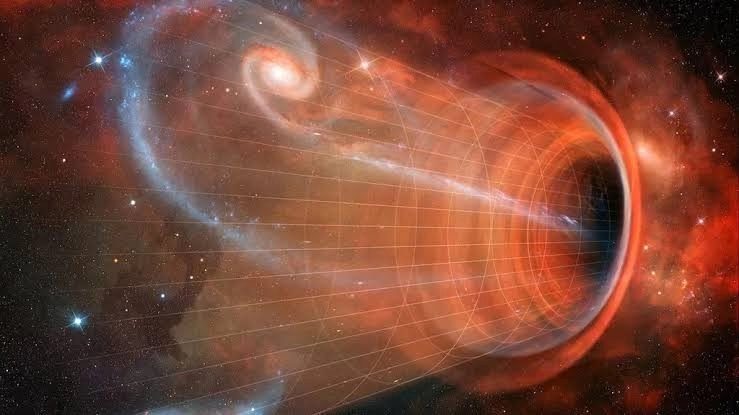BLACK HOLES
By School Admin
Black Holes
‘Black Hole’ is a very commonly used term in today’s world. Most of the people would be aware of Black Holes but a very few would be knowing what it actually is and how it is formed. The term ‘Black Hole’ was coined in 1969 by an American scientist John Wheeler. It was the graphic description of an idea that was given almost two hundred years ago. At that time, there were two theories about light.
The first was that it is composed of particles and the other that it is composed of waves. If it is made of waves, then it is not sure how gravity would act on it, but if it is made of particles then they must be affected by gravity.
On this assumption, a Cambridge lecturer, John Michell, wrote a paper in 1783. The paper suggested the existence of a star which would be sufficiently massive and compact and it could have such a gravitational field that even light couldn’t escape. He suggested that there might be a large number of stars like this. Such objects are what we now call black holes.
It was a crazy idea for that time. In fact, it is not really consistent to treat light like normal balls because in Newton’s theory of gravity, the speed of light was fixed. A ball thrown upward from the earth would eventually reach the surface of the earth again as it would be slowed down by gravity, but it is not the case with light as light would continue to go upwards with a constant speed. Then, how can gravity affect light? A consistent theory of how gravity affects light came with the theory of General Relativity in 1915.
To understand how black holes can actually be formed it is necessary to know the life cycle of a star. A star is formed when a large amount of gas, mostly hydrogen, collapses due to gravitational attraction. As it contracts, the atoms collide with each other with greater speed, thus the gas heats up. Soon the heat is too much that after colliding, the atoms will no longer bounce off. Instead, they will merge and form helium atoms. This process is known as 'nuclear fusion’. The heat released in this reaction is what makes the stars shine.
The heat also increases the pressure of the star until it is sufficient to balance the gravitational attraction. It is a bit like a balloon where the air pressure from inside tries to expand the balloon while the tension in the balloon is trying to make it smaller. This makes the balloon stay at a fixed shape. A star can remain in this fixed shape for long. But! What happens when the star runs off its fuel, i.e., the hydrogen in the star gets over? The answer to this was understood in the late 1920s.
In 1928, an Indian graduate Subrahmanyan Chandrasekhar came to England to study at the Cambridge. During this academic tenure, he worked on how big a star could be . He also tried to figure out the mechanism of its separation from its gravitational attraction. When the star becomes small the matter particles get very close to each other. But due to the Pauli Exclusion Principle they will move away from each other, and so, will make the star expand. Thus a star can maintain itself at a constant radius by balancing the gravitational force and the force of the Exclusion Principle.
Chandrasekhar then realized, however there is a limit to the repulsion that the Exclusion Principle can provide. He calculated that a star less than almost one and a half times the mass of our Sun can support itself against its own gravity. This limit is known as the ‘Chandrasekhar Limit’. Such stars would contract to a radius of a few thousand miles and a density of about hundreds of tons per cubic inch. These are called ‘White Dwarfs’.
It was later realized that there was one more possible state with a limiting mass of about one to two solar masses. In such stars the repulsion is not due to the Exclusion Principle repulsion between electrons , but is rather due to the Exclusion Principle of neutrons and protons. Thus ,these are known as ‘Neutron Stars’. These have a radius of only ten miles or so, and a density of hundreds of millions of tons per cubic inch.
Now, there comes on the final stage. What happens if the star is much massive than the Chandrasekhar limit? Will it contract to infinite density?
A star with mass much above than the Chandrasekhar limit, when it would run off its fuel, will contract to infinite density. The theory of relativity suggests the effect called 'gravitational lensing’, according to which gravity bends the light inwards. Thus ,there would be a certain critical radius at which the gravity would be so high that the light would have bent to that extent that it would not be able to escape the star. Therefore ,any light emitted would not be able to escape. Now, this is what we call a ‘Black Hole’.
A Black hole is simply a region of space-time where gravity is so strong that even electromagnetic radiation such as light cannot escape. A black hole can be divided into a few parts from what we know till now, which are the Singularity, Event horizon and the Accretion Disk. The Singularity is the collapsed nucleus of the star which has contracted to zero size and thus infinite density. At singularity, all the laws of physics break. The next part is the Event Horizon, the point of no return. Anything which enters the Event Horizon will never be able to escape the Black Hole. The velocity needed to escape the event horizon is more than that of light, which is the speed limit of the cosmos. The next part that comes is the Accretion Disk, which has played a very important role in the discovery of Black Holes. It is a disk of superheated gas and dust that whirls around the Black Hole at immense speed, producing electromagnetic radiation which reveals the position of the black hole.
In 2019, for the first time in history there had been a solid proof of the existence of black holes. The event horizon telescope had captured the first ever image of a black hole. Actually, it is not the image of the black hole rather it is the image of the accretion disk which whirls around the black hole. It was the image of the M87 black hole- the black hole at the Centre of the galaxy Messier 87 which is a supergiant galaxy.
Overall black holes are mysterious , yet very interesting things of the cosmos. A black hole is the place where even physics breaks down. The singularity is one of the most difficult things to study for astronomers. It is an interesting fact that according to the Big Bang Theory the world was in singularity before the Big Bang occurred. Black holes are one of the most mysterious things we know. The more they are studied, the more questions they leave. We only know two places where the laws of Einstein break, one at the origin of the whole universe and another at the Centre of a black hole. Interestingly, both at singularities, which makes them one of the most mysterious yet interesting things to study.
Aakash Pandey
Class X-A
